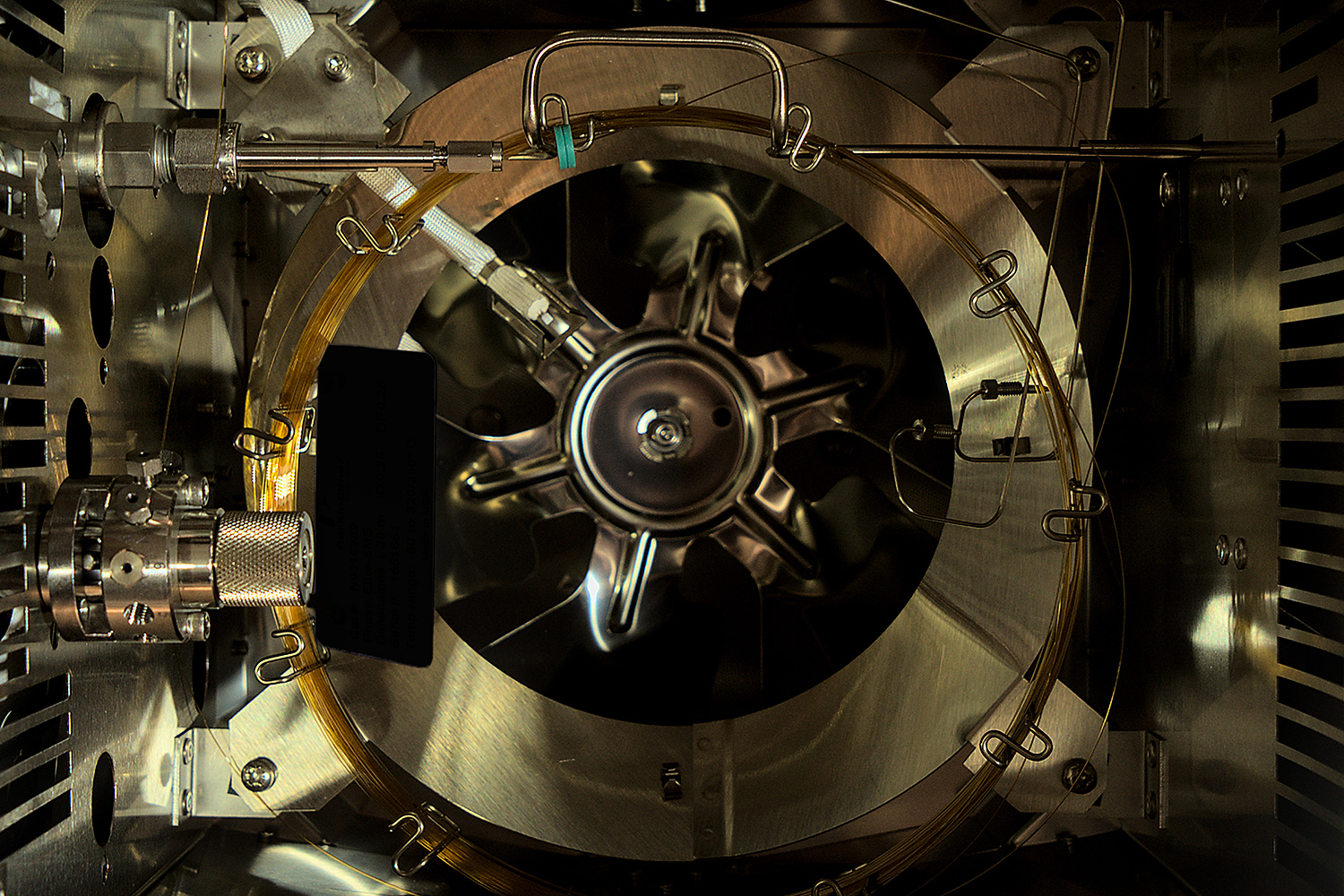Picture of the Month: Understanding How Batteries Age From the Battery LabFactory Braunschweig (BLB)
For the researchers, the headspace GC/MS system shown in the Picture of the Month is an eagerly awaited addition for battery analysis. It was purchased for BLB diagnostic line. It will now make it possible to better understand battery aging and develop longer-lasting batteries. It is a system for the analysis of liquid electrolytes or soluble surface deposits in the components of a battery.

The picture shows a view into the interior of the gas chromatograph. Coming through various inlets and connecting pieces (lines at the top of the picture), the analysis mixture taken in the headspace unit is separated here in the separation column (yellow, coiled capillary in the center of the picture). Subsequently, it is transferred to the mass spectrometer for fine analysis. Credits: Dominik Emmel, Daniel Schröder/TU Braunschweig
With the analysis system it is possible to examine many different, complex substance mixtures with very high accuracy in a short time. The system consists of three coupled units – the sampling unit (headspace), a gas chromatograph (GC) and a mass spectrometer (MS). Each of the three parts plays an important role in determining the type and amount of substances present. The headspace unit tempers the samples and, depending on the method, takes multiple samples of a gaseous, liquid or solid component from inside the battery and transfers them to a gaseous analysis mixture. The transfer into a gaseous form has the advantage that almost no interfering components are absorbed into the analytical device. As a result, researchers obtain very accurate measurements and can already detect traces of substances in the samples taken.
In addition, a quantitative analysis can be carried out by means of a specific calibration technique. This can be used to determine the quantitative composition of the substances in the samples taken. At the same time, it can be checked whether erroneous matrix effects are present. Matrix effects are shown by the fact that the analysis result is falsified by the way in which the sample was taken and the basic nature of the analysed battery components.
A gas chromatograph is connected downstream of the headspace system to separate the analysis mixture. For this purpose, the gaseous analysis mixture is fed into a separation column – a quartz glass with a special polymer coating. The temperature-dependent, different affinity of the substances to be analysed to the material of the separation column results in different retention times of the individual substances in the separation column, which is essential for further analysis.
In the third unit, in the downstream mass spectrometer, the substances now arriving at different times can be ionized and then sorted in the analyzer on the basis of their molecular weight, and finally detected in the detector. A substance-specific mass spectrogram is thus generated and a clear qualitative analysis of the sample originally taken from the battery component can be obtained.
But what makes the headspace GC/MS system so special for the scientists at BLB and its 18 member institutes?
“With the help of the system, we can make a major contribution to a better understanding of the aging reactions that take place in batteries, e.g. the decomposition of the electrolyte or the unwanted deposition of organic layers on the battery electrodes. In our diagnostic line, batteries from SU are disassembled after their end of life and analysed using a wide range of methods. The headspace GC/MS helps us understand which battery components dictate the maximum battery life and why,” says Professor Daniel Schröder, BLB board member and head of the Institute of Energy and Systems Process Engineering, which operates the headspace GC/MS system.
This knowledge could then in turn be fed back into battery production or used for recycling to sustainably reuse the battery components.
